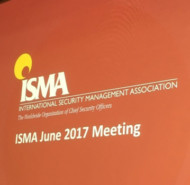Posted on 14 Nov 2013
Fraud specialists have long debated whether it is possible to develop a profile of a fraudster that is accurate enough to enable organizations to catch people in the act of fraud or even beforehand. The prediction of a crime before it occurs is, at least for now, the subject of science fiction. But an analysis of the constantly changing nature of fraud and the fraudster can help organizations stiffen their defenses against these criminal activities. Forewarned is forearmed. This report contains KPMG’s analysis of 596 fraudsters member firms investigated between 2011 and 2013. It is intended to provide the reader with insights into the relationship between the attributes of fraudsters, their motivations and the environment in which they flourish. We have also interviewed KPMG member firms’ investigation leaders to gain additional insights. This report builds on our 2011 publication, Who is the typical fraudster? covering 348 cases investigated, and on our 2007 publication, Profile of a fraudster. The 2011 report focused on the relationship between global patterns of fraud, various attributes of fraudsters and how these may evolve in the next five years.



